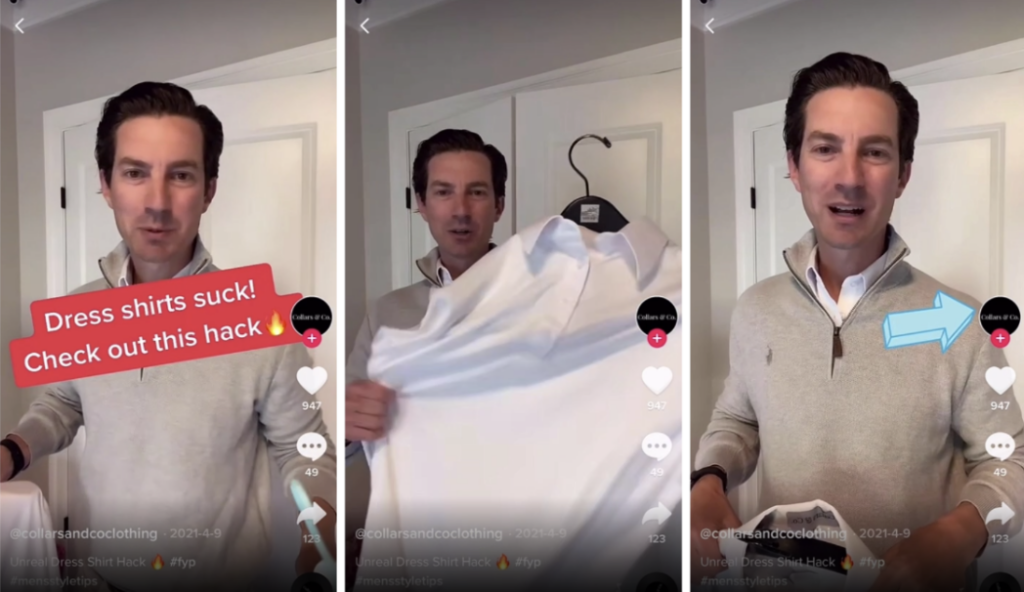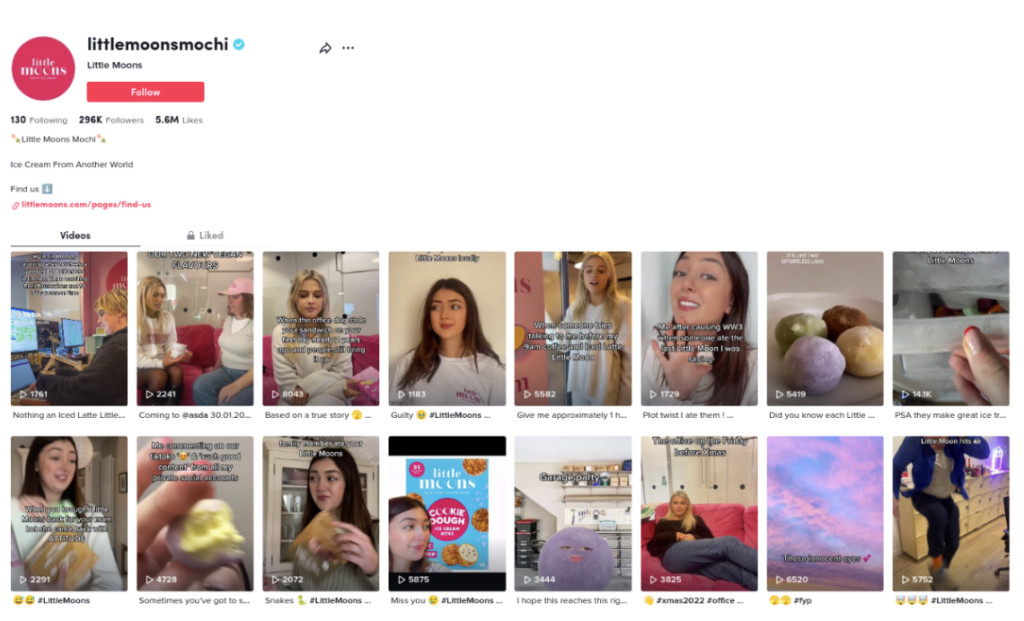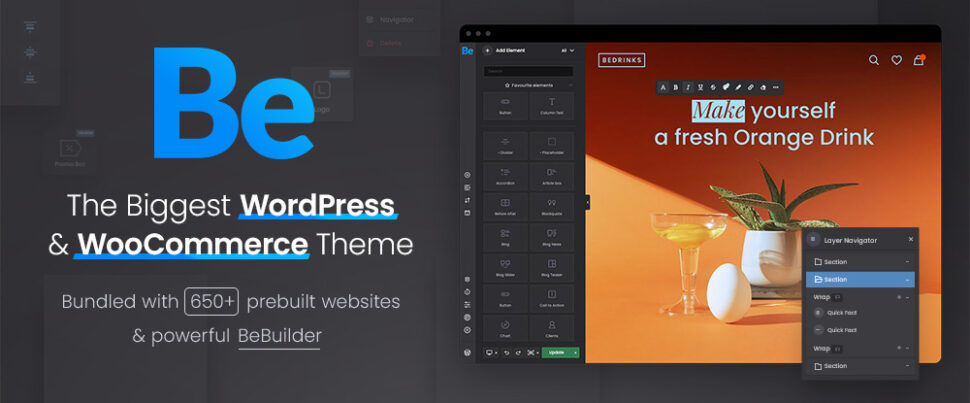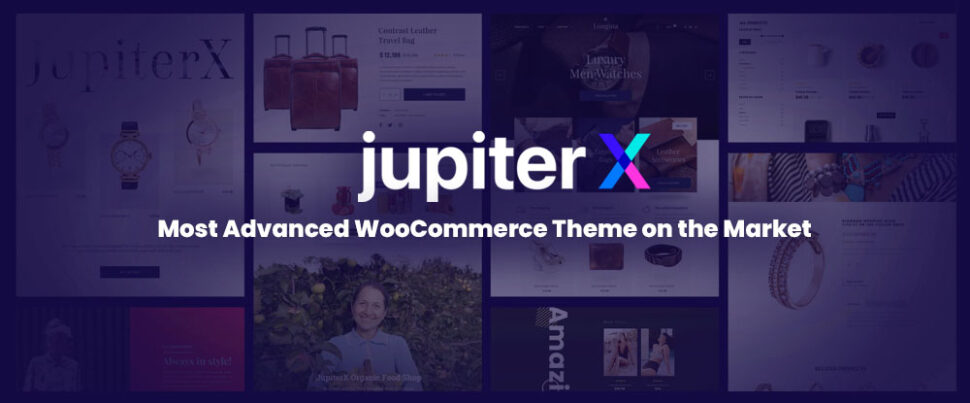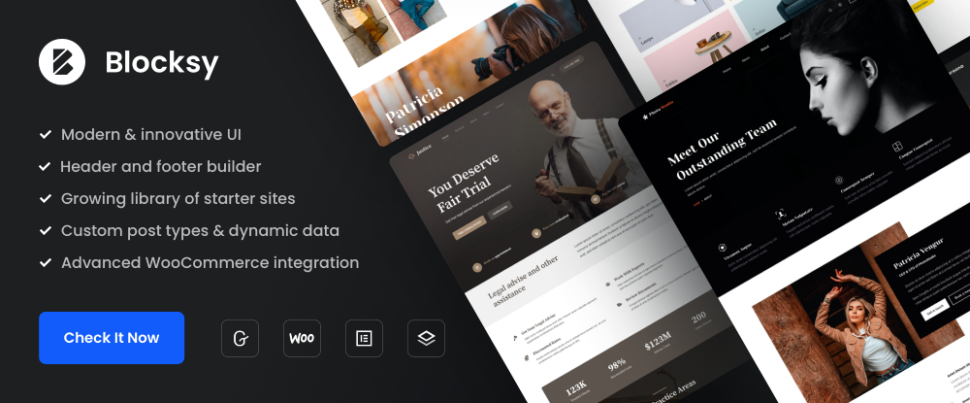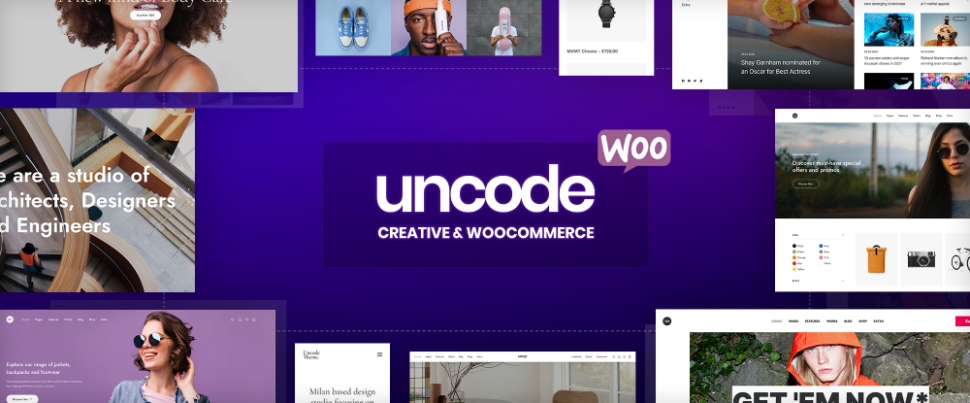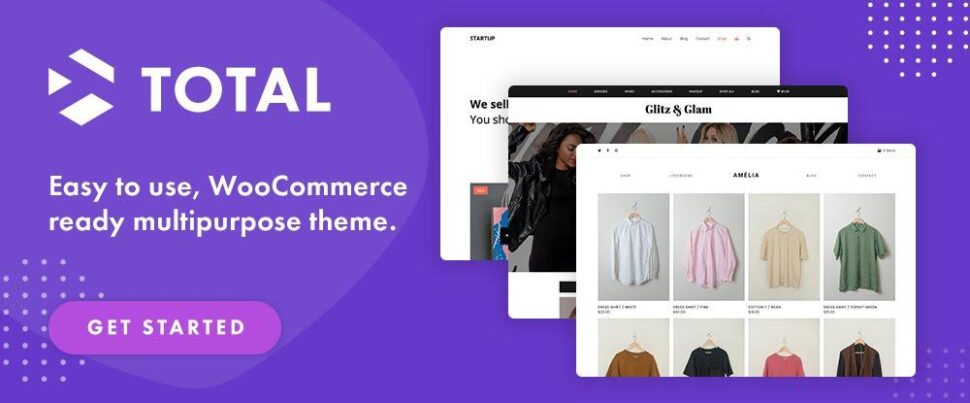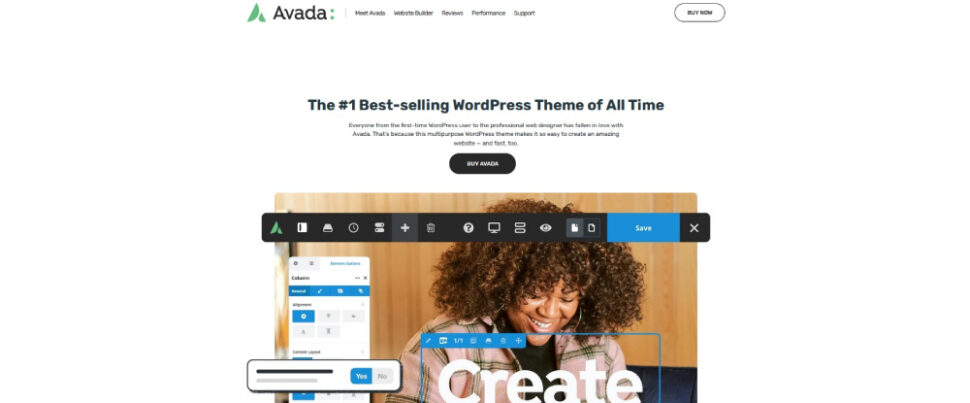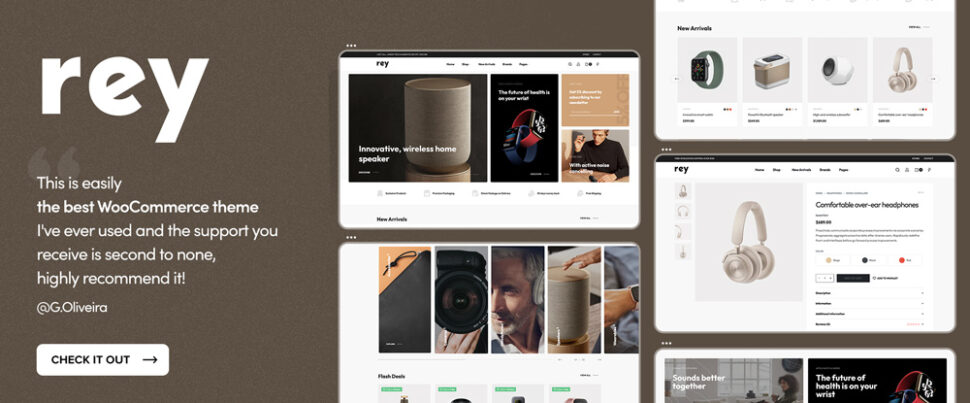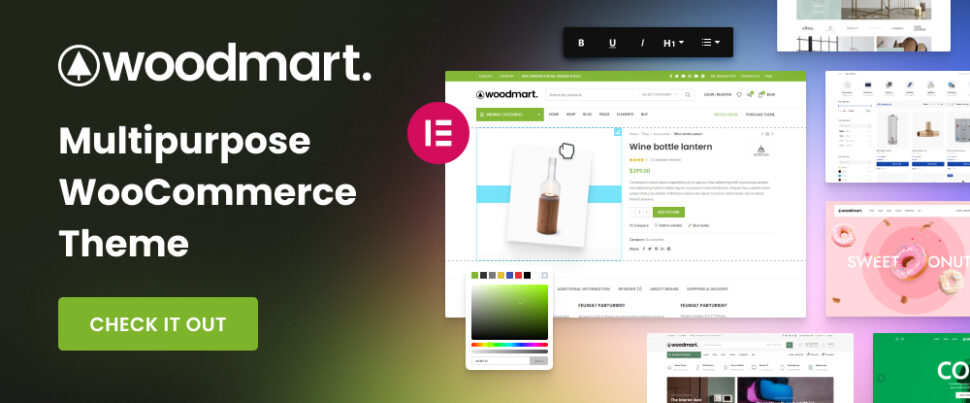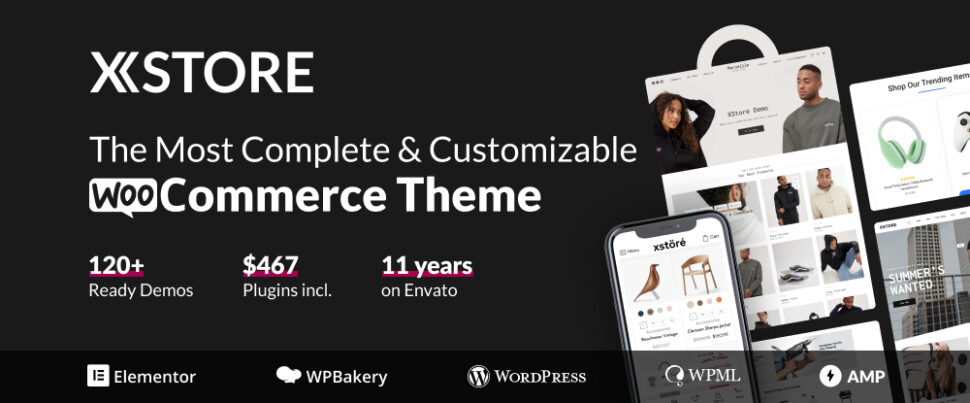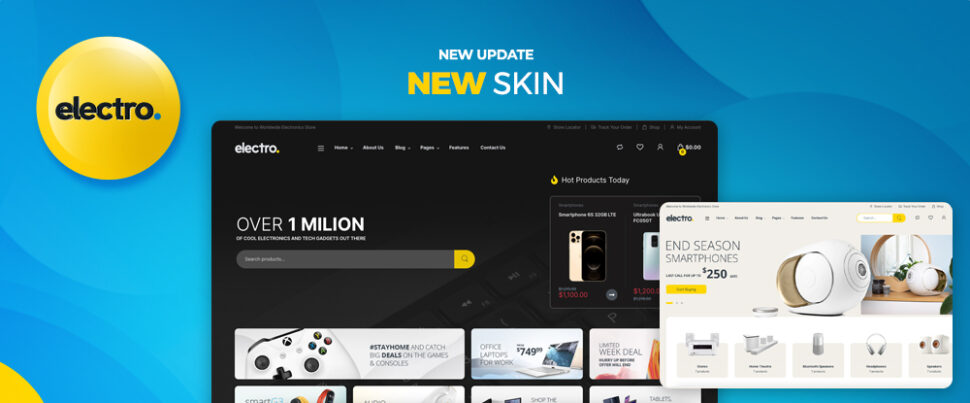In this episode of the Smashing Podcast, we ask what is Customer Experience design, and how does it differ from User Experience design? Vitaly Friedman talks to expert Debbie Levitt to find out.
Show Notes
Weekly Update
Transcript
Vitaly Friedman: She’s a Customer Experience and User Experience Strategist, Researcher, Designer, and Trainer. She spends most of her time helping companies of all sizes, big and small and large, medium, transform towards a customer-centric approach. Now she’s been teaching how to improve customer satisfaction, predict and mitigate business risk, and increase ROI by investing in, of course, great customer experiences. Now she lives east of Olbia-Sardinia, what an incredible city that is in Italy, out in the countryside.
Vitaly: Also, she has recorded over 175 episodes of her livestream podcast on YouTube and has over 600 hours of videos on the wonderful Delta CX YouTube channel and has just published a wonderful book, Customers Know You Suck: Actionable CX Strategies To Better Understand, Attract and Retain Customers. So we know she’s a great design strategist with a keen eye for customer satisfaction. But did you know that Debbie is often called the Mary Poppins of CX and UX? Why? Well, because she flies in, improves everything she can, sings a few songs every now and again, and flies away to her next adventure. While, in fact, a set of clients started calling her just that.
Vitaly: My Smashing friends. Please welcome Debbie Levitt. Hello, Debbie. How are you today?
Debbie: Hey, thank you so much for having me. And I’m almost Smashing. I’m unfortunately getting over Covid, so some people might hear that in my voice. Luckily it’s been mild, and I have to apologize, I accidentally sent you that I live east of Olbia. East of Olbia would be the Mediterranean Sea. I live west of Olbia. Totally my fault. Oh my gosh. I promise I live on land.
Vitaly: That’s okay. But you do not live in the sea, right? It’s not like fish are your neighbours, or?
Debbie: No, I’ve evolved and I live on land, and so I’m sorry about that. That’s what happens when you are multitasking. So thank you for putting up with me, but…
Vitaly: That’s okay. Well, I didn’t check where it is because… Actually I was in Olbia and-
Debbie: Oh wow.
Vitaly: … I was waiting for a bus four times in Olbia and it never came.
Debbie: I’m so sorry. Don’t do it. No, you must rent a car if you’re here.
Vitaly: Well, we will speak about that for sure in our future seasons as well.
Debbie: Come on back and stay with us.
Vitaly: Yes, that might be very reasonable. But when I look at all the wonderful things that you’ve been producing and you’re always there and you’re always advocating for the humans, right? It seems like you’re really care about people, don’t you?
Debbie: I do, yes. Thank you for noticing. I certainly do.
Vitaly: Yes, I think you do. But one thing that’s really struck me,.. I spent quite a bit of time in organizations, also large and small, and every now and again, I have to explain what CX means, what is different between UX and CX and so. Because there are many kind of ways of we can do that, and I think you also mentioned in your book as well. Some people see it as something that marketing does. Some people see it like customer support or customer success. Sometimes it’s like this magical overlap between business and customer experience. And what is it, Debbie, tell us what is it in the first place?
Debbie: Well, the way that I see CX is that it is end-to-end customer experience. It’s that everything our company can possibly do or offer touches our customers. And so we have to be considering all of that. They could be products, they could be services, they could be experiences, they could be digital, they could be all of these things. Very often when people think of UX, they’re thinking, well, that’s just screens, that’s just digital design or research for something that’s going to be digital. But when we think about CX, for whatever reason, CX is generally understood to mean that full customer experience. And so to me, I believe that when we’re doing CX and UX right, they’re the same thing because many people who work in UX don’t want to just think about the screens. They do want to think about the full and holistic journey that the customer has. They want to think about where the customer interfaces with the bank branch or the customer support or the hotel desk people. We do want to think about those.
Debbie: I remember when I was a contractor at Macy’s, we were fighting to be involved in the stores and they said, “No, you’re just the people who make the screens” and they wouldn’t let us. And we really wanted there to be that holistic tie between the digital experiences, website, mobile web and app, and the in-store experiences. And so again, I believe that when you’re doing them well, they kind of are the same thing and they can be the same thing. And we still use some different names for them, but I don’t want to fight too much over that today. I’m dying on other hills, as we say.
Vitaly: So what I hear is that basically CXs ideally would be also a wonderful world of beautiful, beautiful UX and the other way around. But I’m wondering actually still at this point, and maybe you can enlighten me at this point, Debbie as well, when I see companies thinking about how they should work, how they should operate, that often feels like it’s still a feature factory… So you just, let’s deliver that feature for that release and let’s deliver that feature for that cycle and then keep going, keep going. And it’s interesting to me because I think that we’ve been doing this now what for 15, 20 years, this UX, CX, whatever, that kind of thing, did we fail in communicating to companies the right way of running business? Or why is it that we are now by 2023 are still in the position where we kind of have to almost fight for the role of CX — or even UX actually at this point — in a company small and large. So why is that?
Debbie: To me it tends to be two things. I think that in many companies, the question is what’s the least we can do that we can pretend is good enough? And I think some of that comes from what I call “fake agile” because if you look at original Agile and the Agile manifesto, it cares about customer satisfaction. It cares about good design. But the idea of agility was ultimately to make engineering teams faster and more efficient. So we got into this way of thinking, how fast can we go? Can we go faster? Can we go faster? Can we release more? And I say, well, congratulations on going faster and releasing more, but if you’re not attracting customers, making them happy, keeping them, let’s not congratulate ourselves on whatever that agility was.
Debbie: Same for Lean. Many people are working from a definition of Lean that runs against Lean. Lean is supposed to be about finding defects and risks and waste early, mitigating them, proving your efficiency, not because the weapon, and you made people try to go faster, but because you were driven more by quality, and you were more likely to put out how great things that you didn’t have to cycle back and fix later. So think part of what we battle in most of our companies is really mediocrity because everybody who we work with knows that they hate every company that chips crap. You hate those apps, you hate those websites, you hate those hotels, you hate those airplanes, you hate those whatevers. You hate it. And then you show up to your job and you go, “That’s probably good enough. Just get it out there.” And it’s like people have really lost their sense of what customers define as quality and value. So I think part of it is that mediocrity of ads good enough.
Debbie: Let’s just say we’re fast and keep going. And this is going to be a little bit spicy, but part of it to me is UX leaders. I think in some cases, not everybody, we have some weak UX leaders. We have some people who are over-focused on making the stakeholder happy. They’re over-focused on the visual design. They’re over-focused on, “Look, we can pretend we’re agile and Lean too. We’ll just slice UX down to the least we could do, we’ll research for a day. We’ll run a survey, uh.. we’ll design for two seconds. Yes sir. Yes ma’am.” And I think that our UX leaders have done us a disservice and in many ways continue to when they are not fighting for quality, they’re dying on the wrong hills.
Debbie: They’re coming in and they’re saying, “Don’t you understand my job? These are artists, these are not artists.” And I say, stop dying on that hill. Talk to people about how great CX and UX work, mitigates risk, saves companies time and money, increases customer satisfaction, is more likely to increase that loyalty. You’re dying on the wrong hills and you’re saying yes to ridiculously short timeframes, UX work being badly done by a circus of everybody just to say, we got more done. And again, it’s all speed over quality. So I think this has not yet sunk in for companies because we’ve been selling the wrong things. We’ve been trying to sell the value of my job instead of selling the value of the outcome. Hey, remember that crappy project we did where we ended up having to go back and figure out what we did wrong and fix it and redo it? And our customer service had to give people some free coupons to apologize and remember the multidimensional disaster that was? Well, that would’ve gone better if we had done this research, this design, this testing.
Debbie: If we had spent three more weeks, three more weeks would’ve saved all of this wild expense and marketing problems and voice of the customer issues and customer support usage. We are not doing a good job showing the math of how much carnage and waste and money we can save if we just fought for, what sometimes is a few weeks, maybe it’s a little bit longer in some cases, but we’re not demanding generative research. We’re claiming we can work from assumptions and guesses. And I say no one wants that, Agile’s against that, Lean’s against that, Scrum is against that, Nielsen Norman group is against that. Nobody wants to see that. And yet I’m fighting some dude on LinkedIn last week who says, “Assumption-based methodologies are valid.” And I say, well, there’s a Grand Canyon between valid and a freaking good idea. You can work from guesses and assumptions, but this is where they’re landing us. We all see what this is like. We mostly hate our jobs. We need our leaders to be fighting more and differently.
Vitaly: Well, that’s interesting because I think in many ways I do find myself really in these positions where I still wonder sometimes, why do we even bother this position of I can over here or the side of the I can matters, but I mean the position and we went on the left, we test that with A/B testing testing and then we see if this works better or not. But then I always think this always goes into this notion of speed. I think this is very much the core of it really as well, because it seems like we are rushing all the time. We need to deliver, we want to deliver good quality, but in the end, we just want to deliver — be it features or anything else. And one thing that I find quite weird is that we ended up in this situations where we want MVP to validate a product. So MVP is important. We don’t want to spend too much time building and designing and all, but shouldn’t we be designing, I don’t know, the minimal first-class user experience kind of VP or something? I don’t know. What is your take on MVPs in general? Is it just me seeing it wrongly?
Debbie: No, I’ve been fighting MVP and Lean Startup for some time, and then I’m mostly fought back by a lot of white guys who want to comment on my Medium articles. It’s a very narrow audience there wants to fight me on that. But I think we do have to take a second look at MVPs and some of these, again, Lean Startup or other ideas. A lot of these things came from books from over 10 years ago and there’s nothing wrong with 10 years, but they haven’t been updated. And they come from these books that were really aimed at startups. The Lean Startup was for startups. It wasn’t for Oracle or Fang or whoever they are now. It was for startups. And it said, “Hey, if you want to go really fast” — and we have to remember where we all were in the late 2000s and 2010, one of the biggest problems with startups, and you’ll remember this because there was vaporware, there were people who were promising technologies and features and systems and they were never even built.
Debbie: So the Lean startup made sense as an answer to that, “Hey, stop waiting and waiting and waiting and never putting out your mysterious vaporware. Really something early. Just get it out there, give it a try.” And I think that advice can make sense for startups in 2010, but they really don’t make sense for our company and the size of projects we have, the amount of customers we have, the reliance we have on retaining those customers and making them happy. It’s not the same as two bros in Silicon Valley in 2010 who are going to rush some early version out.
Debbie:And the other thing I remind people is that the MVP can be reframed. There’s no reason why a solid realistic UX prototype can’t be your MVP. And in fact, in my book, I think in chapter 21 where we interview Steve Johnson, a product manager, he says, “Eric Rees admitted that he made a mistake.” He meant minimum viable prototype. He didn’t mean minimum viable product. He didn’t imagine that this early pseudo beta, almost beta early version was something that you would sell, something that you would expect people to pay for. He really expected that it was almost like an early prototype. But of course we have that in user-centered design and human-centered design. I don’t need engineering to build it for me to see if it’s going in the right direction. I’m a big fan of Axure (hashtag not sponsored), and I want to make sure that I’m making a highly realistic prototype, but not realistic from the perspective of visual design, from the perspective of usability flow —
Vitaly: User experience.
Debbie: Yes, process. Can you type in a field? Yes, you should be able to type in the field. And then I can bring that to usability and other testing and be able to say, aha, we are solving the real problem well or we’re solving the real problem, but we’re not there yet. Or wow, we’re way off. We are really not solving the real problem well or at all. And that’s what we should be doing early on and in cycles. But the problem is that people read Lean Startup and they saw a couple of things that said Agile, and they now think you can’t know if you’re going in the right direction without having engineering spend sprints, weeks, months, building it, testing it, merging it, releasing it, and then sitting around waiting for customer support complaints or an A/B test, which is often quite flawed or some sort of feedback.
Debbie: And then what do we do? We go, it’s probably good enough and we put it in the backlog or the ice box. So we have a lot of problems with our processes, we have problems with our standards. We have much lower standards internally than our customers have for us. So I think that the MVP is our problem, but I think it can be reframed. Ultimately the minimum viable product or prototype is an early UX prototype that can help us test a concept or one of its many endlessly, many executions.
Vitaly: Well, I think also when it comes to customers, standards are different, expectations are much different now as well. So it’s just a very, very different world. And coming back to your book, I rarely read one single chapter in which is so packed that I feel like, wow, there is so much stuff in it. And I usually don’t do that to be honest, I actually printed out chapter 18.
Debbie: Oh, thank you.
Vitaly: Just because I wanted to underline first because the reason I do it is like I read and then I underline and then I was so tired of underlining. I just said, I’m just going to put it next to me. So maybe just to make it a bit more tangible, I would say to all your listeners, so let’s imagine you’re working for a company that is just a regular conservative company, very much legacy ridden, a lot of good old processes in place, not really a culture of sustainability or interest in user-centric or ethical design or anything of that sort maybe.
Vitaly: But there is a strong need and there is a strong will to move there. But of course when it comes to little exercises like that, it’s a big shift. It’s a culture shift. It’s a shift of how people are working, what they believe in, how they embed their values and the way they’re working into the product, how the metrics are going to be working for that, namely specifically, how do we even choose metrics that fit? How do we track them? How often do we track them? What do we track and all that.
Vitaly: Maybe you could just give us a little bit of insight in that kind of scenario if you wanted, let’s say, to support in some way, some sort of a shift like that. I would say what is absolutely required for this to be successful? That would be question maybe number one. Question number two, how to get there? Because you are Mary Poppins, right? So you just come in, you fly in, you solve problems, you fly away. So what would be your magic dust that you would sprinkle all over all departments in the organization?
Debbie: I would say the first way to help yourself get there is to shift to the language that the business cares about. The business doesn’t care about delight, the business doesn’t care about empathy. The business cares about the usual stuff. Find more customers. We hope they’re happy because we want them to stay. That’s it. Attraction or adoption satisfaction and some sort of loyalty or retention. That’s it. Talk about those things. Talk about risk, talk about wasted time and money. Look up Six Sigmas, cost of poor quality. It’s a wonderful model that I go into early in the book. I think in chapter two, it’s a whole list of things that your company is wasting time and money on because you didn’t build something better for the user. So forget about some of the words we tend to use in UX and design because they make sense to each other.
Debbie: Makes sense when you and I talk about it, empathy, delight. But somebody who is just counting beans as they say, or looking at numbers and budgets and bottom lines, they don’t care. They just don’t. They want to know how do we make more people join and stay and we hope they give us some good satisfaction scores in the middle. So we have to start there and we have to make sure that’s our common ground. And that’s where I focus. I focus on how can we find ways to bring more customers in, make them happier so that they’ll stay. Focus there. And then the question is, what can CX or UX work do that augments that, supports that? How do we use early generative research to bring us customer intelligence we don’t have now? Because sure, we have endless analytics, we have surveys, we have, what do you want?
Debbie: We have AB tests, we’ve got lots of things that are mostly quantitative, but we don’t know a lot of the why. We don’t know a lot of the how. We get an NPS score that says negative 30 and we don’t really know why, but everyone will get together in a brainstorming session, guess why, and then guess how to fix it. And they’re surprised when that doesn’t work. So I drive people towards customer intelligence. Now some people think that’s just more market research. Let’s just find people who demographically fit into our sweet spot and throw more darts at them and give them $10 off and advertise more heavily to them. But I say, look, you can do that. That’s the adoption piece. But if you’re not building the better product, service or experience, you won’t have the satisfaction and you won’t have the retention and the loyalty.
Debbie: So all of these things are that longer arc. So I’m making it sound over simple, “Hey, you just have to speak the business’ language.” But it’s a huge shift that a lot of people in UX and design are not always doing. They’re still focused on we have to delight the user. Someone asked me, “How do you build a usability test to prove that people are delighted?” And I said, “I don’t think I would do that. I’m not usability testing for delight. I’m usability testing that we’ve solved the correct problem with a good execution of a good concept.” So we get hung up on some of these buzzwords. And so I say to people, forget the buzzwords. Take that MBA approach. That’s why I went and got an MBA. I could have gone out and gotten a master’s in UX HCI. Human factors.
Debbie: I went for the MBA because when I come in, I want companies to know that I care about how the business works, I care about how the business runs. I care about the business making money. Yes, I want it to be done ethically. Yes, I want it to be done with customers in mind, with DEI, with accessibility, but I am dedicated to good, solid, long-term, not quick shortcuts, ethical ways to attract those customers, genuinely make them happy, not fool them into some sort of weird high score or pay them for a good rating. And then loyalty because we’ve built something great. The example I use is I am a super wacky wild fan of Monday.com (hashtag not sponsored). I just paid them for another year. They pay me nothing. They have no idea who I am. Can you think of a system that you freaking love that much that you are going to tell people this thing is the bomb?
Debbie: You couldn’t pull me away. When I left my previous project management system for Monday, the CEO contacted me, “You’ve been with us for 10 years. What can I do to keep you?” I said, “Nothing. I wouldn’t stay if it were free, I wouldn’t stay if you paid me.” Monday is a better match to my needs and tasks. I will be more productive there. Those are my standards. So we have to be using better research, earlier research, generative qualitative research to know our customers so that we can say we really built that thing. Was it 20 years ago, we talked about the killer app. We don’t seem to care about that anymore. We don’t seem to care about if we’re really building what customers need. We seem to care about checking stakeholders ideas off a list.
Vitaly: That’s right. I think I also read an article about the boring designer or boring products that we actually got. So in the past, as you were saying, we got so excited about building just that cool thing that’s going to take off and take over the world. But now I think that many of us have discovered the sympathy and I guess also interest in just boring product that help us sleep better. I always go in a medium and your collective and so on. And I read all these articles and I would love to see more things about, I don’t know, healthcare or enterprise, B2B, CX, UX, I don’t know, anything like that. Those kind of case studies. They’re not necessarily most exciting applications to some people, but they’re also so important. It’s so interesting to solve.
Vitaly: And maybe one thing I wanted to dive in a little bit deeper with you here as well is, so if you encounter a situation where you are in that legacy environment and corporate environment and enterprise environment and whatnot, the question is for me at least in my work, is to always prove that what I’m doing is moving in the right direction, kind of moving the needle in the right direction. So again, what you’re saying is just music to my ears, speaking business terms to people on who are your managers. I think this is an incredibly important skill for designers to have rather than having the design, I don’t know, design dish, I guess, which many people might not understand.
Vitaly: So I’m wondering though, how do you convert the needs that the company has in terms of business into something that’s necessarily customer-centric? Because at least this was my experience, it cannot not necessarily go hand in hand. Sometimes we end up with some business goals, which are we need to be aggressive on the market, we need to take over, we need to be better than every competitor. We need to be, I don’t know, newsletters all over the place. We need to be as prominent as possible. How do you balance it out with something that’s more, because it’s more like short term, long term? Because usually in my experience, you need a strategy for both.
Debbie: Oh, there are a lot of questions rolled into there. I’m trying to figure out where I start. I think that companies are looking very much at the short term a lot of times. So you have to have a short and a long term strategy. But a lot of people don’t even have a strategy. As you said, they’re just saying, “More newsletters, more content, just more things. And then we’ll throw those darts and see what happens.” And I think that companies have to get a little bit more focused. And a lot of that goes back to customer intelligence.
Debbie: If you don’t really understand who Debbie is and why she comes to your site or uses your product or is still at the trial version and hasn’t paid. If you are guessing or making things up about me or trying to assume something about me because I’m a 50-year-old white woman, then you don’t really have good customer intelligence.
You are probably going to be guided mostly by guesses, assumptions, and copying your competitors. And you can do that. But let’s not pretend you’re innovative. Do not sing the song of we’re innovative if you’re just going to copy your competitors.
Debbie: But I think that one of the biggest key steps that a lot of companies need to take that they haven’t taken is they need at least a few customer-centric metrics. Very often when we look at a company’s KPIs, not only are they business-centric, but as you said, very often they’re the opposite of what people want to do. When I see a KPI in a company or even a North star metric of how many people did we get to apply to jobs? And I go, well, that’s funny because we know that people want to apply to as few jobs as possible.
Debbie: So you’re going to try to make people apply more in a world where people want to apply less, there is a mismatch here. And what often happens is because we are feature factories and because we tend to be very stakeholder driven, the stakeholder says, “Look, we just want to see these numbers go up. We want to see more people applying to jobs.” And I say, what about the long term mark of their success or happiness? “It doesn’t matter. We just want to see more people applying to jobs.” And then they’ll do whatever it takes. And we see this reflected in traditional impact maps, which in my chapter 18, I blow impact maps out of the water and I give you a different version of them that’s more customer focused. But you see these impact maps that are like, “Hey, what do you want to make happen? You want to make people click on a button more? Well, cool, as you said, more newsletters, more discounts, more whatever, you more content, more emails.” Hands up who wants more emails?
Debbie: So I think we have to start with always looking at both, how does this create something the business wants? And we have the metrics to measure that and how do we make sure this is something that’s going to produce in our customers what they would want for themselves. We want them to be loyal, but we can’t trick people into being loyal. We can’t force them into being loyal, that’s a short-term win. It’s not going to be a long-term win. So we have to start with some of these metrics and being able to have some tough conversations around crappy metrics. How many page views did someone see? I have an example in the book where when I tried to log into an online stock investing account, I saw six pages before I could get into the account.
Debbie: Now we all know that that could be done in one screen. It absolutely can be done in one screen. Hey, what’s your username and password? Hey, we sent you a text to make sure it’s really you. Hey, it’s really you. Thanks for chopping by. You’re in. That could be one screen. This was six separately loading pages. And I swear one page was just a giant screen that said, “We’re going to text you a code.” Continue. And that’s how I know someone has a metric of more page views. Congratulations on achieving your more page views metric. That’s a vanity metric. It’s meaningless. It doesn’t improve the customer experience. So we have to start looking at both of these in terms of each other.
Debbie: Which is hard for companies. They’re going to need consultants, they’re going to need specialists. They’re going to need new people because the same old people that are there are probably used to tap dancing along with the way we do things and following and not making waves and not challenging the status quo. You’re going to need a few new leaders or a couple of consultants to come in and shake that up and say, “Look, it’s great that you’ve been successful thus far. You’re doing many right things, but there’s room for improvement. And you have to be open to that change.”
Vitaly: Yes, I think one of the funny things is that I often find so much passion, I would say around things like time on site as well, but what does it mean time on site? Does it mean that people like what they see? Does it mean that they don’t find what they need? Does that mean that they’re just totally frustrated and annoyed just try to find it all over the place because search is not working well? What does it even mean? All those things are not really reflecting in any way the customer experience at all. So that’s very much aligns to my experience I guess as well. There is one thing that’s really is probably to me the most problematic, and that’s the shift of culture in a company like that. So the problem is that very often, very different departments have their own set of KPIs and they track trying to improve their own KPIs and very much they’re not really aligned.
Vitaly:So maybe one department just wants to publish more just to be out there. The other department will be looking at traffic and other things and the other, what is our velocity in terms of their deployment or features that we have and things like that. But then we need to really change the culture so that we have this customer centricity as again, our north star. And so that defines what is going to happen in all these different departments, but that requires a lot of movement in organization, which is really slow and a lot of time as well. Now, fortunately, we have wonderful people like you who come in and just hoof and get it all done.
Debbie: Well, not quite. But yes, I try to push as many boats out and as many needles as I can. I usually can’t get all the changes on my list done. Sometimes I’m lucky if I can get half, but I can go into a place and I can affect change. But obviously that company has to want to change, but then you also have to have that change management hat on because that company’s afraid to change. They feel they’ve been really successful thus far doing it this way. Why should we care about that? Why should we prioritize? I remember having a conversation, I think I put it in the book where I said to someone, almost all of our app ratings in the last X months are one in two stars, and I’ve confirmed that the complaints are valid, we really are broken. And I said, what are we doing about that?
Debbie: And the person said, “Well, we have a 4.6 rating out of five overall on the Apple Store. So what’s the problem?” And so again, like you said, if you’re watching the wrong metrics, you can tell yourself any story you want. I can tell myself any… I recently lost 10 pounds. I thought I looked amazing until the pictures came back. And then I said, I’ve got more change to make. So you can see numbers and you can tell yourself any story you want. The better company with that better future is going to tell itself some more honest stories about that, which is, isn’t it great we’ve got a 4.6 rating in the Apple Store that’s probably going to help us get download a little bit more than if our rating was lower? But we probably should prioritize all of these complaints coming in, especially since we found that these aren’t just complainers.
Debbie: These are valid complaints. So what I have found in companies, what tends to block this is usually in some cases, a very toxic leader, a narcissist, a malignant narcissist, a person who the only way to do it is my way. A person who will make up fake facts and fake stories. A person who creates fear in people under them. A person who loves to put people on performance review plans or performance improvement plans when you speak up against the status quo or question something or want to try something different. So first of all, to me, there are a few toxic leaders. And the wacky thing is every company I go into has them and every company knows who they are. And I always say, you know who this is. And they stand out from other people, which means you’ve done a good job hiring.
Debbie: If they fit in and everyone’s like that, then this needs an atomic bomb to fix. But these people are different because they’re that bad. Why aren’t we removing them? Or why aren’t we shifting what they do? Why aren’t we demoting them? Why aren’t we putting them on a performance improvement plan? Why do we allow them to continue to create such negativity and carnage? And in some cases, attrition, people quit. They can’t stand to deal with that person anymore. So we have to do something about those toxic people and we have to work with corporate strategists on how they measure success. How do we measure success internally? If it’s making people click the button that nobody wants to click, that’s just going to come down the line. And especially in companies where CX and UX have no voice, then you just have the engineering team pushing for faster delivery and you have the product team pushing for I am unfortunately an order taking puppet who’s just going to do what the stakeholder says and not really push back and stuff like that.
Debbie: We need people. We claim we have empowered teams, we claim we want empowered teams. We don’t. We’re not even close. And somebody with some watts has to start saying out loud, we’re not empowered. We’re not empowered. We’re not living up to our company values. I saw a company last year who was not living up to their company values, changed their company values, and they changed them to the most watered down, meaningless things I’d ever seen in my life. You can do that. You can make your company values more meaningless if you’re having trouble adhering to them, but that also sends a message. So you’re right, it’s a complicated thing. There’s a lot of gears locked into each other and I can’t say, here’s that one thing that everybody needs to do that’s going to really help. It’s mostly speaking up against the status quo.
Debbie: Does it mean that your job could be on the line or you could receive some badness from saying those things out loud? Sure. At an unhealthy company, there could be that retaliation. There isn’t supposed to be, but there could be. So you take that chance. A lot of people don’t want to take that chance. And that’s why I say bring in the outside consultants. I will come in, I will say everything that needs to be said, and you know in six months I’m gone anyway. I have no horse in the race. I just want to tell the truth. But a lot of people working there can’t tell the truth anymore. And that’s a bigger culture problem, as you said. So I don’t have the one magic bullet. If I had the one magic bullet, my book would be 10 pages long. Three pages of introducing the magic bullet, five pages about the magic bullet and two pages thanking everybody for reading.
Debbie: But my books tend to be on the long side because I am trying to walk people through a lot of different instances and scenarios that they will run into at their jobs as consultants and say, here’s some things you can try to just chip away at that piece. Because if you try to look at the whole mountain of overwhelming BS at our companies, you just give up. You go, how am I ever going to change that monolith? But we have to look at some of the smaller pieces and how we can make small changes there just to start and just to show the company it’s worth it.
Vitaly: Debbie, we could be speaking for hours of course and have so many questions prepared, which I know didn’t get to, but I do have to ask one question that has been bothering me for a very long time, and I still haven’t found the proper answer to that. So can you make this shift? Like transition to customer centricity in an organization without a proper commitment from the top?
Debbie: Oh, definitely not. Because what I found is that everything comes from the top. You can certainly have a bottom up swell of support for this. It can be a bottom up person who goes to their manager and says, “Why aren’t we saying more about this?” And that person goes to their manager and says, “Look, we know this sucks. Why aren’t we saying more about this?” So there can be some bottom up support and action, but the change and everything else comes from the top. That’s it. Now, we may not have to impress the C level executive, they may be too high up. They may not care as much about some of the day-to-day. Sometimes it’s those mid or high level leaders, maybe the directors or heads or whatever it might be in a particular country or business’ hierarchy. Those are the people. The people looking at budgets, the people looking at outcomes, the people checking on the KPIs.
Debbie: It’s not always the C level. It’s probably somebody below them and they just report up. So it’s those people that we have to affect. Could be VPs. Those are the people that we have to go to and say, “Look, we know you want more adoption, satisfaction and retention. How’s that going right now?” “Not so well.” “Oh, why not?” “I don’t know.” That’s our first problem. Why don’t we know? They usually don’t know why. Or they’ve made something up. People are disloyal, they’re tire kickers, they’re broke, they’re whatever, echo. Cool, bro, you made that up. You don’t really know. That’s probably only true for a certain percentage of your customers. Let’s not work from guesses. Let’s not work from assumptions. Let’s use guesses and assumptions as an opportunity to dive deeply into customer intelligence. You think a survey’s going to answer that? Go ahead. Start with a survey.
Debbie: When the survey comes back, I’m going to ask you again, what do we know and what don’t we know? Is that survey enough to take action and do we know what action to take? If we’re guessing again and going into another brainstorming workshop to guess again, we still don’t know. And so I want to make sure that we are not creating these strategies or making these decisions or pushing these KPIs without better knowing some stuff, knowing some stuff internally about ourselves, knowing some stuff externally about users, customers, partners. Obviously this ends up falling into service design, which to me can also be CX and UX. These all float in the same ocean. But that’s what I tried to tell people is you don’t even know. You don’t even know why sales is losing people. They picked a competitor. That’s not the full answer. That’s the surface level answer.
Debbie: Oh, our NPS is low. Do you know why? We can’t seem to retain people. Sales even offered them 10 bucks. Do you know why? I just keep pushing for why don’t we know why? Shouldn’t we know why? Can you give me four to six weeks to start learning why? And some companies will go, “Oh, it’s only four to six weeks? I thought it was months.” It doesn’t have to be months. I can get you some preliminary data from generative observational or interview research in four to six weeks. Can we start there? Yes. Then you make sure you collect their-
Vitaly: That’s probably going to be very difficult to say no to that.
Debbie: Well, look, and especially as a consultant, I then put a number on that, and I don’t overcharge as a consultant, I’m very fairly priced. I hear, I’m under-priced. I say, “Hey, a six-week project, let’s just call it five figures.” It’s 60, 80, whatever, thousand dollars. Maybe I have to throw more people on it to make it go faster. It’s a hundred something thousand dollars. Hey, how much money are we losing right now in customer loyalty? How much money are we losing because sales couldn’t get those people to stay? Isn’t $150,000 worth it and six weeks for us to be able to answer all these questions of why and to replace these guesses and assumptions with knowledge? We don’t have to work from guesses and assumptions. We can work from really good knowledge that goes beyond our market research, that goes beyond demographics to look at behaviors and perspectives and tasks. I am task-oriented person 100%.
Vitaly: Well. I think also there are so many different other stories and companies that you also mentioned in your book of course. So this brings me to an important of probably the last question for today. Given the fact that you’ve been working again with small and large companies all over the place, what were some of the most interesting lessons you learned? What would say some patterns which emerge, you would say, if this is that kind of company, I have to do this. Or if that’s kind of company, I’m going to do that. If this, oh, no, I’m running away. This is not, no, no, no, I’m not going through that. So would you say are some of the most important notable lessons that you’ve learned? Just maybe a few personal stories. It’s always interesting to hear.
Debbie: Yes, sure. One of the things that I mentioned in my book and in the workshop version of the book, I talk about making sure… A lot of change management courses say, find your allies. But I say also identify your detractors. There are going to be those toxic leaders who want you to fail. They don’t want that change because even if that change brings something good, people might wonder why they didn’t make that change. It accidentally shines a negative spotlight on them. So you’ve got detractors, you’ve got toxic people who are probably going to work against what you are there to do. It’s important to identify them and to manage them. And I won’t have time to go into how, some of that’s in the book, but you’ve got to manage those detractors. You can’t just focus on who are my allies or who is excited about this or who’s buying in.
Debbie: You have to look at who might sabotage this or me. That’s definitely one of the things that I would warn people about. And another reason why I remind people, this may be an area where you do want to bring in consultants because that person can sabotage the hell out of me and undercut me as much as they want and make themselves look foolish, and then I’m gone. But if you work in a company and you try to do some of this stuff and that person sabotages, you could lose your job. You could be demoted. I’ve seen this. And so that’s a place where you want to put me in front of the target instead of yourself. Save yourself. That’s one thing. Another thing is you have to look for the company’s compelling reason to change. You have to figure out why should they change?
Debbie: Because again, many companies, even those who claim they want to change, they claim they want to be customer-centric, they claim they want more customer journey maps. Even when companies claim this, a lot of times they really don’t want to change. They’ve been profitable. They’ve been making money, they’ve been growing stock prices, doing okay, whatever ways that they measure themselves, they’re usually pretty happy. And so the question is, now, do you want to run away from that and say, these people don’t want to change, I’m not going to bother? Or can you find either that compelling narrative or that reason for them to make some sort of change or find the area in which they are willing to change? And that’s hard. Last year I was working with a 1 billion dollar European company that competes against Indeed there, therefore job posting and applying to jobs.
Debbie: And when you’re a $1 billion company and you’re the market leader of Germany, why change? Is it going so badly? Can we just say, this is going pretty well? And so that’s hard. So I had to find some places and some allies where we could get people to say, you know what? This part of things isn’t going as well as it could. And oh yes, our UX team doesn’t really have a voice, isn’t really treated well, are treated as order takers. What can we do to improve that? How do we elevate our user experience work and workers? So I think it’s a matter of, and I know that we’re supposed to stop saying things like, pick your battles because it’s violence based language. And I’m still bad at that, I apologize. But we really have to take a look at where can I make change?
Debbie: Where will they let me make change? That’s why when I do the Mary Poppins thing, I say, hey, look, I fly in, fix as much as I can, as they’ll let me, and then I fly away. So you have to find the places where that door is open or where you can create that compelling narrative. Has the company lost a lot of money in a certain area lately? Have they burned customer trust and now they’re over-utilizing customer support? And it would be great if people weren’t so unhappy in calling in so much that saves companies money. You have to start looking for all of that. And so one of the exercises in chapter 18, which I’ve been doing on my YouTube show on some Mondays, is the Delta CX version of an impact map. Where we start not with what the company wants to do, we start with the customer’s problem, and then we look at what’s the root causes of that, and then what’s the impact on the business?
Debbie: What’s happening in the business, what money, time, resources, environmental damage, what’s happening because we have this customer problem and these root causes we haven’t addressed. If you can start building something like the Delta CX impact map version, you now have that built in argument. We need to make this better for our customers because here’s all the stuff. Here’s all the waste and risk and lost time and money that our company is dealing with, and that’s what we’re going to save. These are the arguments that we need to start making on all levels. Could a junior make that argument? They could try. Why not? They’ll have access to some of that information, but it’s probably more for our managers and leaders. You got to find that small open door.
Vitaly: Well, if you the listener would like to hear more from Mary Poppins or also called Debbie, you can find her on LinkedIn where she’s, guess what? Debbie Levitt, but also on her website, Delta CX. And of course, get her wonderful book: Customers Know You Suck: Actionable CX Strategies To Better Understand and Track and Retain Customers, well, whenever you get your books. Now, thank you so much for joining us today, Debbie. Should I call you Mary? No, probably not.
Debbie: No, I’m definitely Debbie. Mary Poppins is somebody else. And I also want to mention we’re putting up a website at customercentricity.com, which will have even more information because guess who owns that domain? And you can also grab my book at DeltaCX.media, which is where I’ve got information about our books and workshops, and we’ve got the digital version up for as little as $1. So if anybody is from a country or area or life situation where buying a book right now doesn’t feel affordable, we do have the $1 version to try to make it more available.
Vitaly: That’s wonderful, Debbie, wonderful. Well, as we often do in the end though. Well, imagine somebody listening to this 20 years from now thinking, oh, they had problems in 2023 mean, but by now, like 2043, we have solved CX issues for good. So is there anything you’d like to send out to the future or any parting words of wisdom you’d like the future generations to follow along? Like I don’t know, maybe aliens 200 years from now thinking, how do we improve CX of our ships?
Debbie: Yes, that’s a hard one. I can certainly hope for the future. I can certainly hope that in the future we’ve made more ethical choices, we’ve made more customer-centric choices. We’ve realized that we have no business, no staff, no money if we aren’t making customers happy. I don’t know. I wonder what our problems, I think in, I want to say 2043, but it really feels like it’s going to be 2025 where we’re battling for what should we let a machine learning machine do, and what should we let a person do? I think that’s going to be our first challenge. I can’t even think out to 2043 right now. I have to admit. I really think that the, we’re already seeing the question of what do we really need Debbie Levitt to do, and what can we ask a bot to do? And what I’ve noticed is a bot can rehash stuff that’s out there.
Debbie: For example, if you go to Google right now and you say, how do I be more customer-centric? See a load of great sounding things that aren’t actionable at all, you’ll see, “Care about your customer. Build empathy. Brainstorm and be innovative.” None of those are actionable. You’ve no idea what to do and what not to do. So I think if we can just talk about the nearer future instead of the distant future when it’s the robot uprising, I think that our more immediate challenge in the coming years will be how do we keep critical thinking about what the bots are feeding us or returning to us to make sure that even if we do find a place for what I’m calling bots to assist us in our work or be part of our adventures. How do we make sure we’re still critically thinking about what we’ve put into them and what we’re getting out of them?
Because I see a lot of stuff that people are very excited about that just looks like crappy rehashed articles you can find anywhere on Google or Medium and blog posts that just say, “Yeah, have more empathy and make a customer journey map and be more customer-centric.” That doesn’t help you at all. And that may be where our AI is for some time because it’s not yet a thinking robot. It doesn’t have my ability to be strategic. So that’s my wish for the immediate future because I can’t even think about 2043. Hope you don’t mind the answer.


